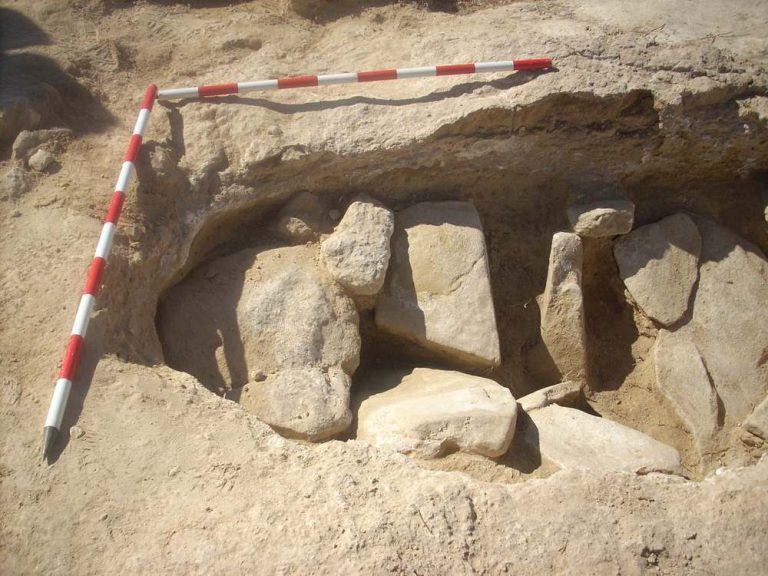Fieldwork
This listing expired on July 29, 2018. Please contact cepoat@um.es for any updated information.




Location: Murcia, MU, ES
Season: July 15, 2018 to July 29, 2018
Session Dates: Only one session. It is from July 15th to 29th 2018.
Application Deadline: July 15, 2018
Deadline Type: Exact date
Website: http://www.um.es/cepoat/schoolofarchaeology/?page_id=9301
Discount for AIA members: No
Program Type:
Field school
RPA Certified:
no
Affiliation:
Murcia University
Project Director:
Dra. María Haber Uriarte, Professor of Prehistory at the University of Murcia. PhD in Physical Anthropology. Degree in History from the University of Salamanca and PhD from the University of Granada. Specialist in funeral contexts and bioanthropological analysis (Master in Forensic Anthropology).
Project Description:
This course is aimed at students and people who wish to participate with us in this Physical Anthropology on field course: The necropolis of the Roman Villa of Los Villaricos, is located 5 km east of Mula in Murcia (Spain), where we can study first hand a model of Roman settlement of rural type known as Villa.
This settlement consists of a large building with many rooms dedicated to various functions, among which we distinguish a residential area with bedrooms most of which have beautiful geometric mosaics and a thermal resort, as well as an industrial and working area such a mill or torcularium with its pressing area, its pipelineas and its storage rooms for wine and olive oil. Due to the re-utilization and transformation of the villa from the last first century AD until the end of the V century AD, the area undergoes through various changes, most notably the aptation of a room to create an apsidal (probably for religions reasons and functions) and a necropolis of a later period.
This Physical Anthropology course we offer is a comprehensive training course in fundamental aspects such as archaeoanthropology, laboratory and field work, determination of sex, age and pathologies, etc.
The developed program is as follows:
1. Field work in Physical Anthropology. Archaeoanthropology
Extraction of human remains in an archaeological contexts; methodology of collection and field data gathering. Archaeoanthropological field cards.
2. Laboratory work: cleaning, cataloguing, inventory and conservation of the bone remains.
Cleaning methods of the recovered bone remains based on their conservation state. Different ways of cataloguing the bones according to their suitability. Database programms. Long-term preservation treatment of the remains and packaging regulation standards.
3. Methods and techniques for the physical study of the subject in question. Scientific methodology in anatomy. Analysis of data in Anthropology. Osteology: differentiation between axial skeleton and appendicular skeleton. Laterality.
4. The human skeleton: anatomical identification of the cranial parts.
Classifying the most important skull bones. Osteometry: craniometric points, distances and most common indexes in the skull.
5. The human skeleton: anatomical identification of the human postcranial skeleton.
Classifying the most important body bones. Osteometry: distances and most common indexes in the postcranial skeleton.
6. Gender determination.
Determination of sex in the skull. Determination of sex in the pelvis. Discriminant functions of long bones and their usefulness in the sexual determination of the skeleton.
7. Age determination.
Age determination in children: dental methods. Age estimation in adults: cranial sutures, pubic symphysis, sternal end of the ribs.
8. Hieght determination.
Analysis and estimation of sexual dimorphism. Height and robustness.
9. Lifestyle evolution and it relationship with health.
Definition of Paleopathology. Most frequent diseases in the Roman world. Indicators of environmental stress and diet. Epigenetic traits.
Period(s) of Occupation: Early Roman period.
Notes:
This course is aimed at students and people who wish to participate with us in this Physical Anthropology on field course: The necropolis of the Roman Villa of Los Villaricos, is located 5 km east of Mula in Murcia (Spain), where we can study first hand a model of Roman settlement of rural type known as Villa.
Project Size: 1-24 participants
Minimum Length of Stay for Volunteers: 15 days
Minimum Age: 18
Experience Required: No experience is required but preference is given to undergraduate and graduates studying relevant fields of knowledge but other people interested in this field are also welcome.
Room and Board Arrangements:
The students will stay in the youth hostel El Matadero. This hostel offers group rooms, showers, toilettes, laundry facilities and bedding. Capacity: 10 people. Breakfast, mid morning snack, lunch and dinner will be prepared by a local chef at a nearby lodge restaurant. If there are any vegetarians or anybody with any kind of allergy should inform us as soon as possibly. How to get Mula: Buses to Mula can be reached every hour from the bus station in Murcia. http://mula.es/user/pdf/Murcia-Caravaca-Murcia.pdf Cost: 500€
Academic Credit:
5 credits offered by Murcia University. Tuition is yes.
Jose Javier Martinez Garcia - Cepoat
Cepoat - Saavedra Fajardo University Building C / Actor Isidoro Máiquez 9
Murcia
Murcia
30007
Spain
Phone: 0034 666125197
The AIA is North America's largest and oldest nonprofit organization dedicated to archaeology. The Institute advances awareness, education, fieldwork, preservation, publication, and research of archaeological sites and cultural heritage throughout the world. Your contribution makes a difference.